What is an Organigram?
Explore the purpose and limitations of organigrams. Learn about the main types of organigrams used by companies to communicate organizational structure.
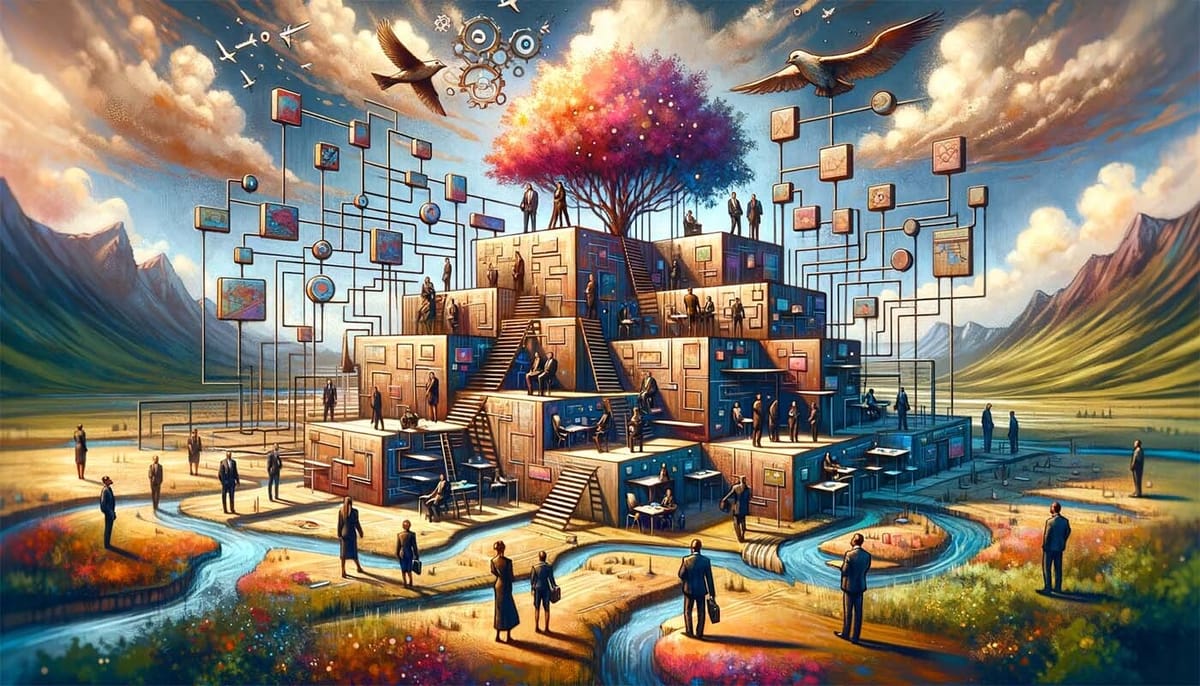
Let’s face it – figuring out who makes decisions in your company can feel as complicated as escaping from a maze. Between vague job titles, behind-the-scenes influence, and unofficial hierarchies, it’s tough to know exactly how the chain of command works.
You’re left wondering:
- Who do I ask about getting this project approved?
- Whose buy-in do I need to move forward?
- Who has the authority to green-light my ideas?
It often seems like you need a secret decoder ring to get things done!
This is where organigrams come to the rescue. These handy diagrams cut through the confusion to visually map out reporting relationships. Organigrams give you an aerial view of how influence flows within your company.
Instead of feeling lost in a maze of office complexities, you’ll finally have a clear path to navigating your organization’s structure. Read on to learn more about organigrams.
What is an Organigram?
An organigram (often spelled “organogram” or “org chart”) is a diagram that visually represents the structure of an organization. It shows the hierarchical relationships between managers and employees, as well as the divisions and departments within a company. Organigrams provide a quick snapshot of who reports to whom and how responsibilities are divided across teams.
In short, an organogram allows you to see how an organization functions. It’s an invaluable tool for both leadership and staff members.
Key Characteristics of an Organigram
Hierarchical Structure:
An organigram typically arranges positions in a top-down format, showing who reports to whom. The organization’s leadership is usually at the top, with layers of management and staff cascading below.
Authoritative Insight:
According to Harvard Business Review, clear, well-communicated structures enable better strategy execution and ensure that everyone understands their role in achieving company goals.
Clarity in Roles & Responsibilities:
By mapping out each position and its reporting line, organigrams help employees quickly identify whom to contact for project approvals, guidance, or specialized expertise. This visual clarity reduces confusion and streamlines internal communication.
Visual Format for Complex Information:
Organigrams break down complicated reporting relationships into digestible visuals. Whether it’s a single department or an entire multinational enterprise, a visual map makes it easier to understand how various teams collaborate.
Supporting Research:
Studies cited by MIT Sloan Management Review emphasize that visual models help employees navigate organizational complexity, improving overall comprehension and team cohesion.
What Can You Do with an Organigram?
Now that you know the basics, what is an organigram useful for? Quite a lot, it turns out!
Workforce Planning - HR can design dream team organigrams to plan future hiring needs. These visuals provide helpful insight into the costs associated with growth.
Succession Planning - Create hypothetical organigrams to prepare for changes like promotions and retirements. This allows HR to get ahead of shifts in company leadership.
Employee Directory - With organigram software, employees’ names, roles, and contact info can be accessible in one central place. It serves as a living staff directory.
Team Structures - Organigrams provide clarity on team structure, especially cross-functional teams, helping employees understand who leads each project and handles every function.
Onboarding - Share organigrams with new hires so they can see where their role fits in. It’s an easy way to introduce them to the team.
Internal Mobility - Some organigram tools let you highlight open positions. This gives staff visibility into opportunities for advancement within the company.
Limitations of Organigrams
While organigrams provide helpful visualizations of company structure, they do have some drawbacks to consider:
Difficult to Keep Updated
As employees change roles or leave the organization, the org chart can quickly become outdated. With frequent adjustments needed, manually updating organigrams is tedious.
Lack Personality Insights
Organigrams only show formal reporting relationships. They don’t provide color on how managers lead or employees collaborate. The interpersonal dynamics that characterize a workplace are absent.
Miss Informal Connections
Day-to-day, employees interact with a wide variety of coworkers, not just their direct reports. Key relationships and influence networks that form organically fall outside the formal organigram.
So while organigrams deliver on many fronts, they don’t tell the whole story. They lack certain details about culture, camaraderie, and communication.
Common Types of Organograms
Here are a few common types of organograms that organizations use:
Hierarchical Organograms
The hierarchical organogram is the most common. It resembles a triangle, with the CEO or president at the top. Authority trickles down from there through vice presidents, managers, and individual contributors. This type of org chart makes sense for companies with a more traditional management structure.
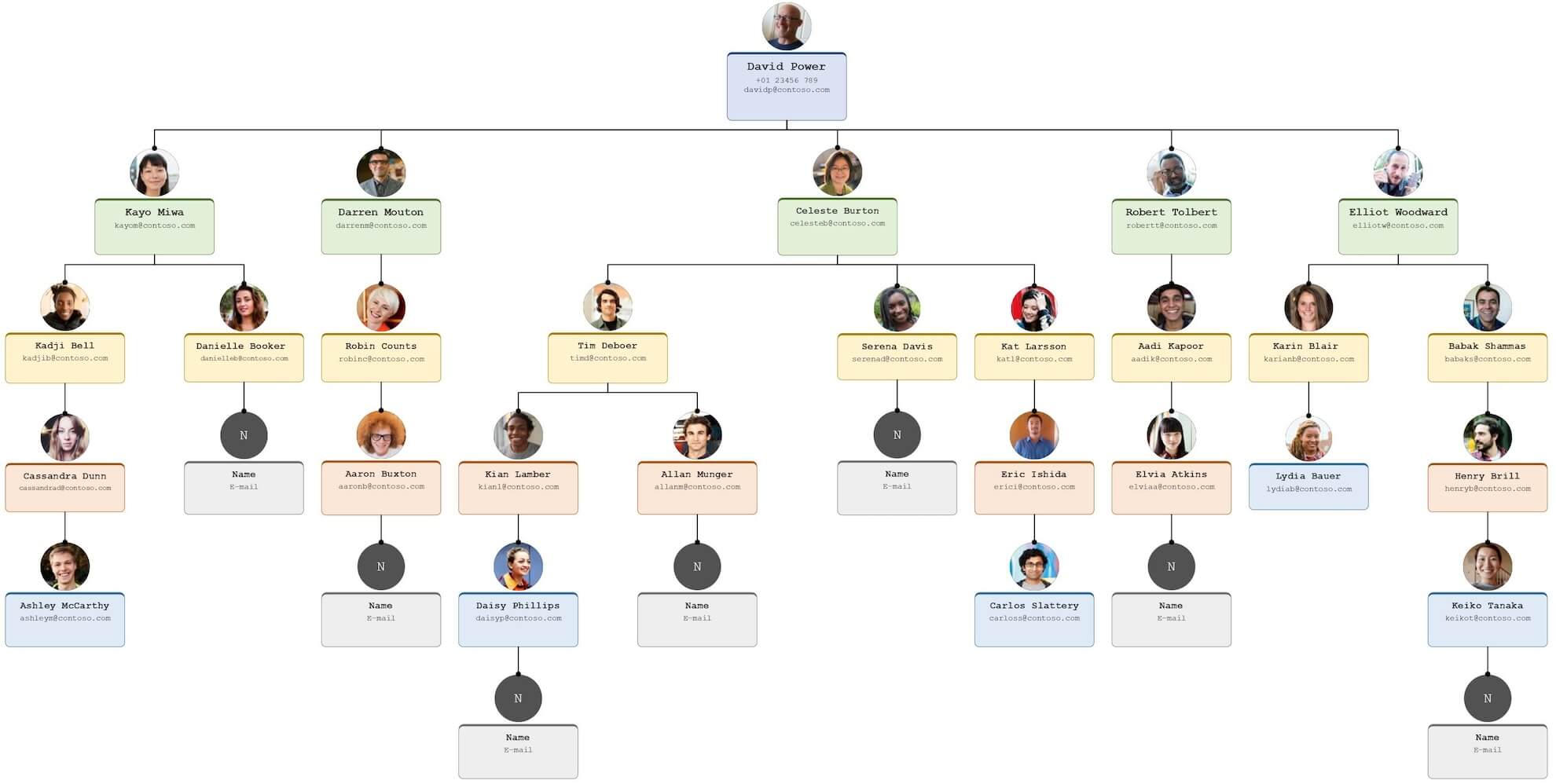
Matrix Organograms
A matrix organogram has more of a grid or rectangle shape. Unlike a hierarchy where employees report to one manager, the matrix structure has a functional manager and a project manager. This creates a dual-reporting relationship that gives staff members flexibility. Matrix organograms work well for rapidly growing companies that need agility.
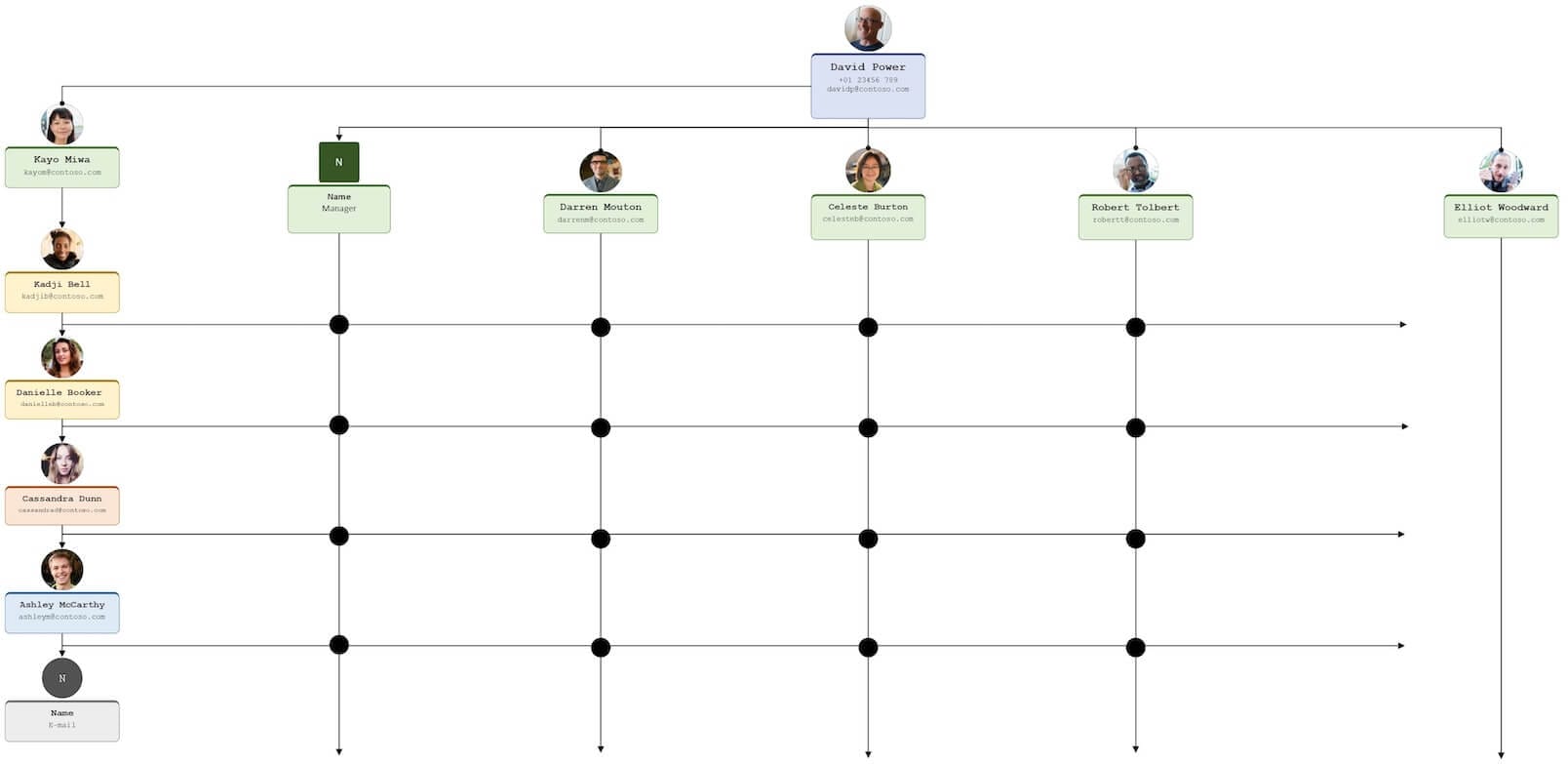
Flat Organograms
As the name suggests, flat organograms have very few layers of management. There is little hierarchy; instead, most employees operate independently. This model is popular among small companies and those with a more progressive philosophy. However, as staff size increases, flat structures usually transition to more layered ones.
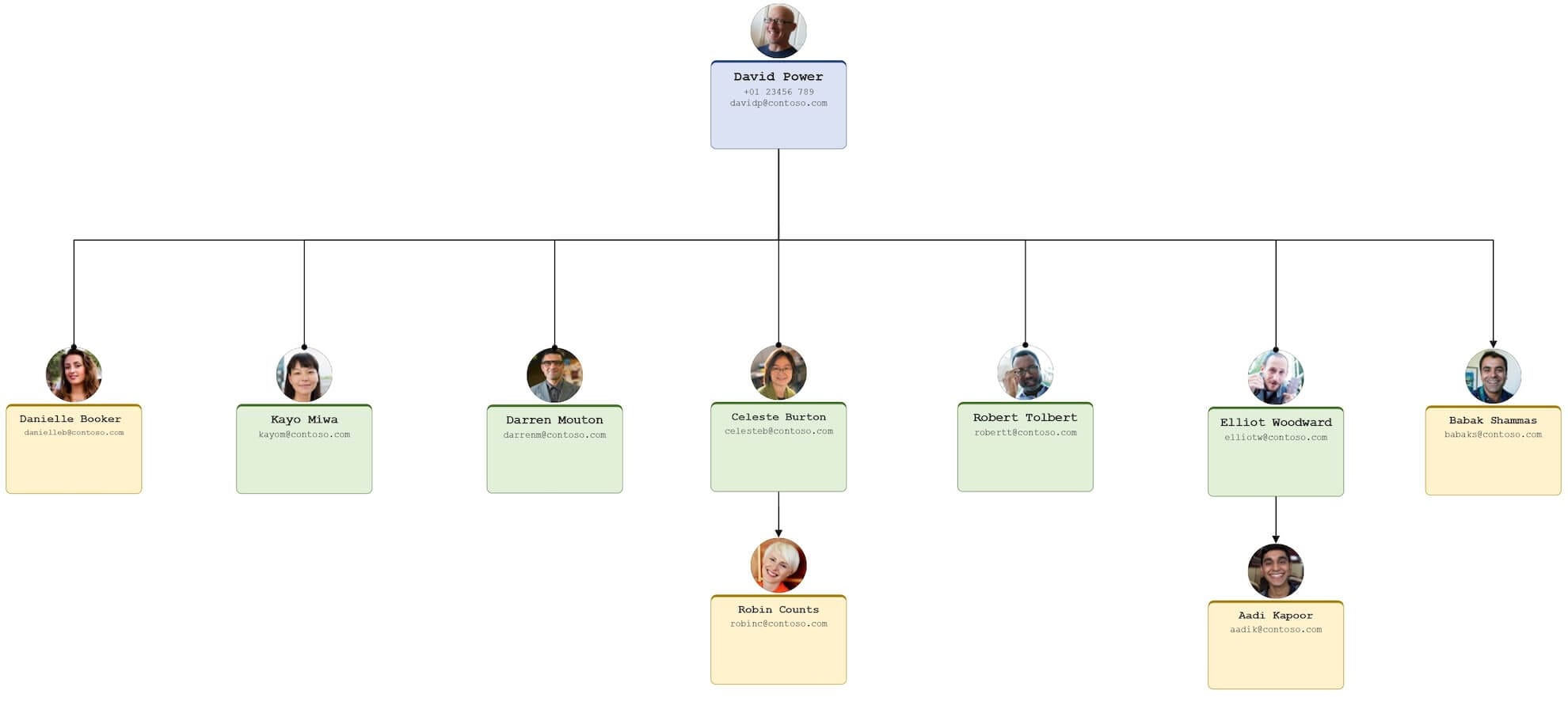
Optimizing Your Organigram with OneDirectory
Maintaining an up-to-date and accessible organigram is crucial for any business, from small enterprises to expansive corporations.
OneDirectory offers an interactive solution that enhances your ability to visualize and navigate the reporting structure of your organization's organigram effectively. With OneDirectory, you can effortlessly trace and highlight various "paths" across the organigram, simplifying the understanding of complex command hierarchies that feature multiple management levels.
Additionally, OneDirectory's org chart software empowers you to select various vantage points for examining your organigram, providing a dynamic perspective on the command structure across different offices, departments, and teams—a task that static org chart diagrams struggle to accomplish.
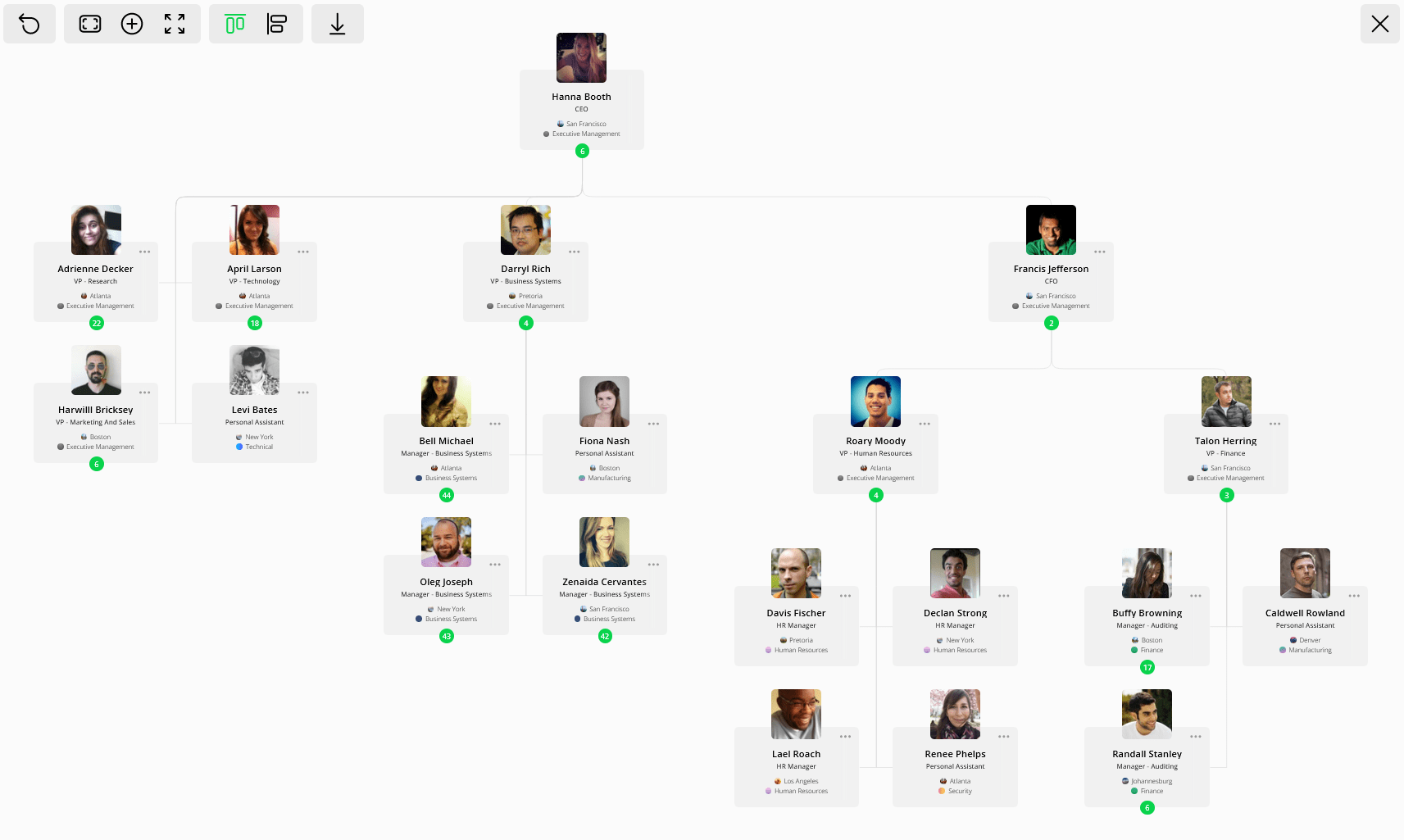
Wrap Up
In summary, organigrams are an excellent way to communicate organizational structure. They lead to better transparency, collaboration, and strategic planning. With so many benefits, it’s easy to see why organigrams remain an essential business tool.
About the Author
Greg Bennett, COO at OneDirectory, brings over 10 years of expertise in organizational design and digital collaboration tools. Having guided numerous companies through structural changes, Greg specializes in helping businesses visualize their workforces through effective organigrams and employee directories.
If you want more insights or need help creating or maintaining your company’s organigram, contact OneDirectory. Our team can provide personalized strategies to ensure your organizational structure is clear, efficient, and ready for future growth.


